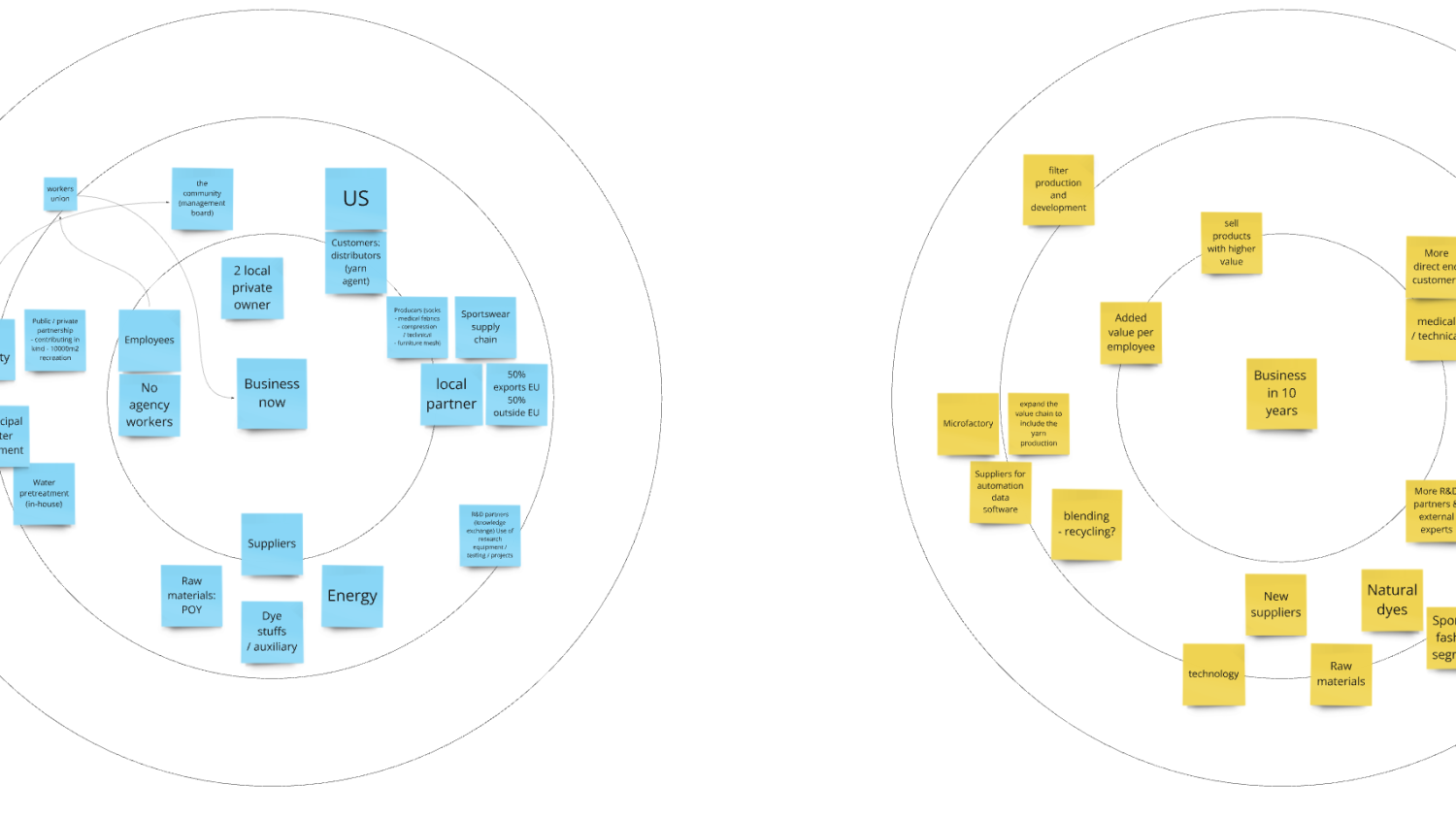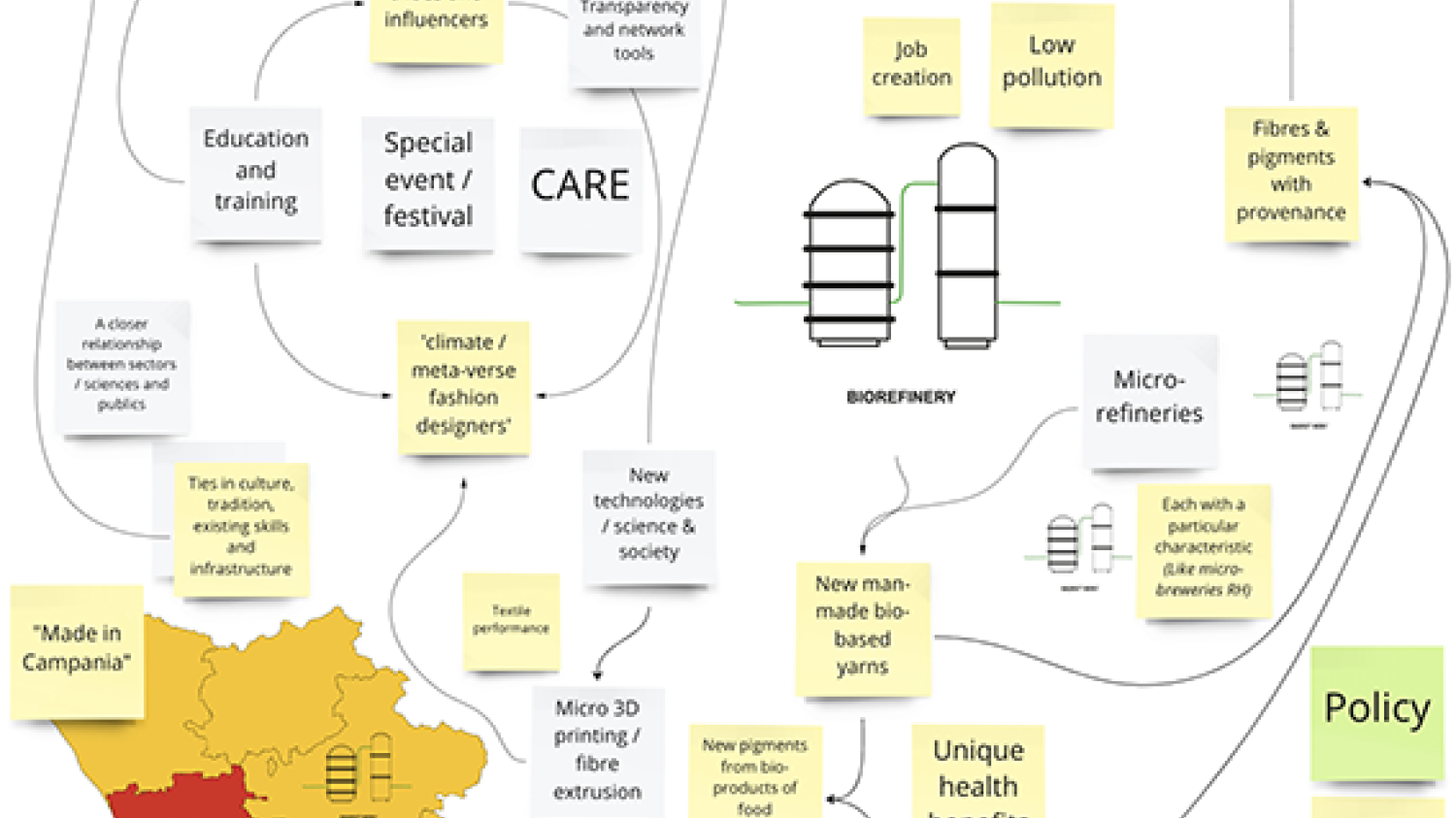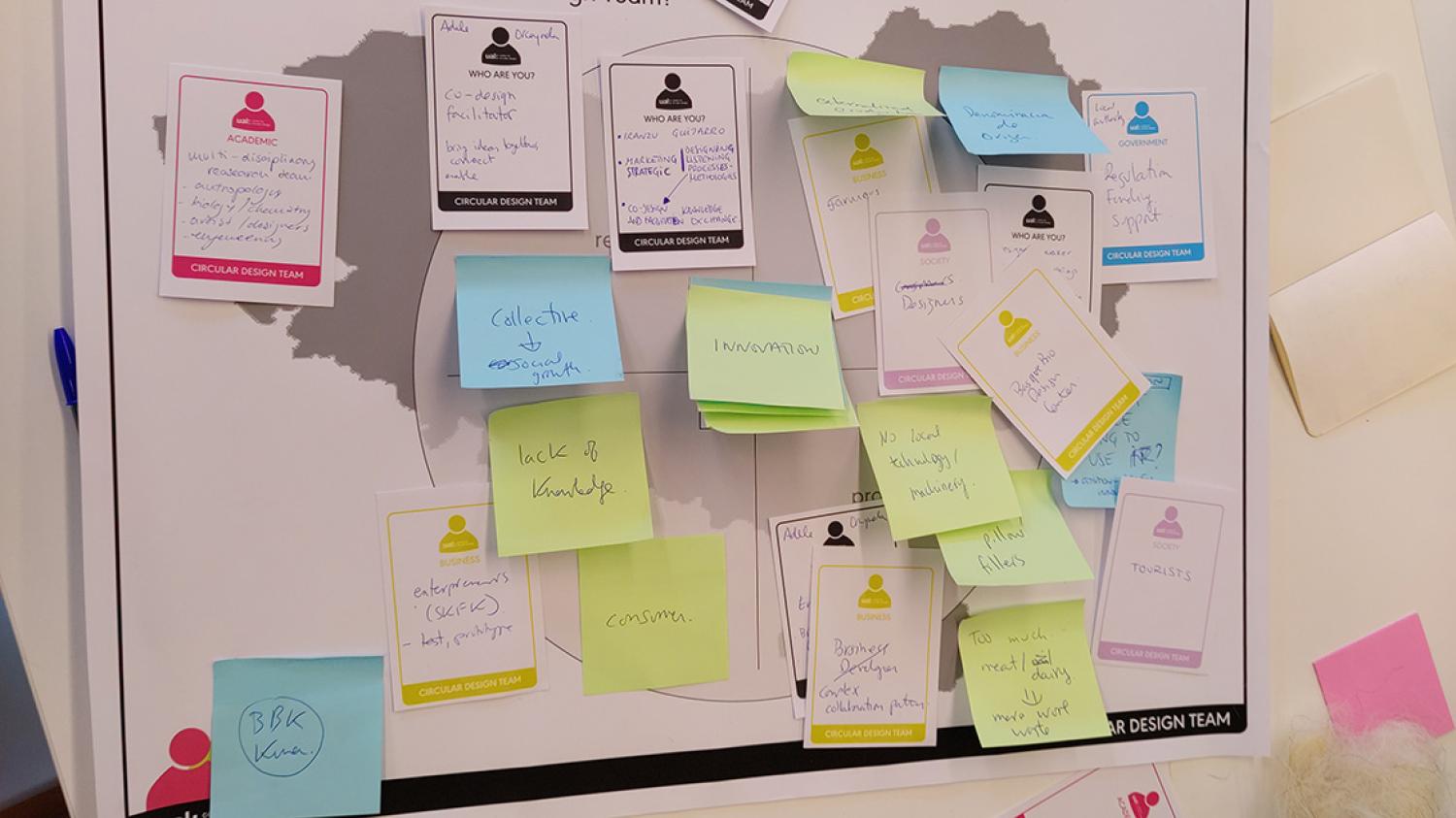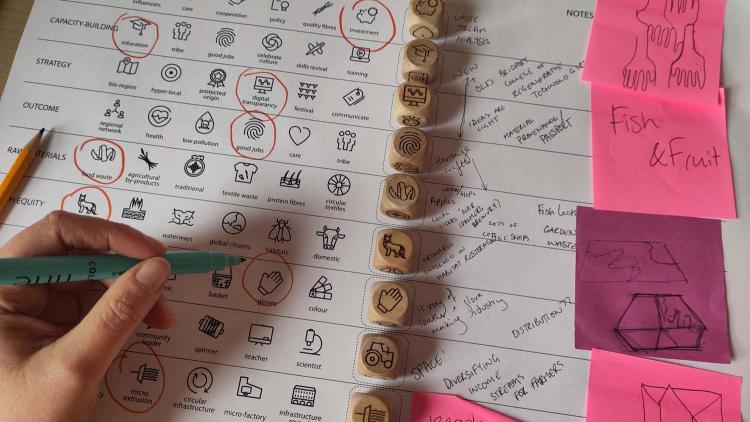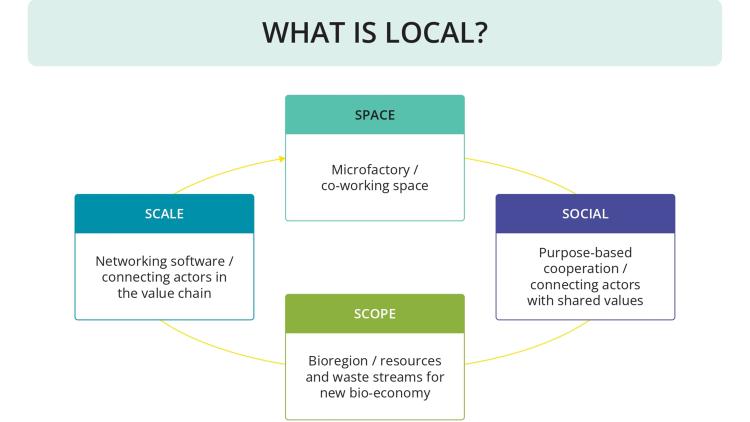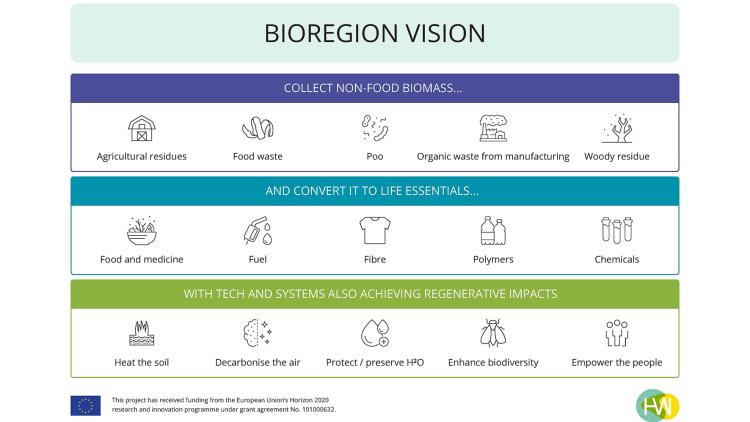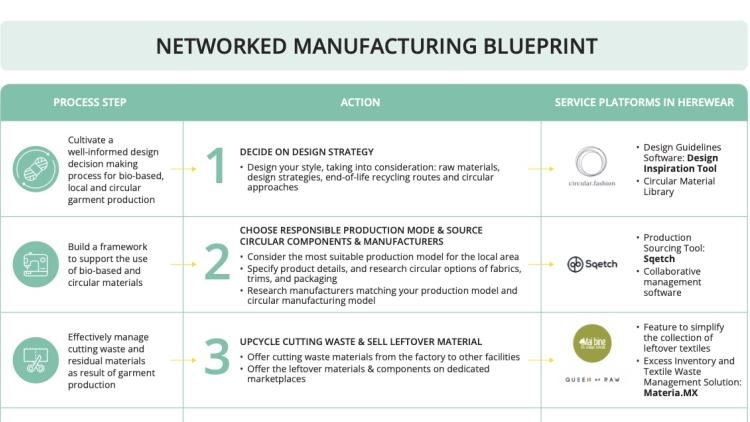Ecosystem Mapping
Ecosystem mapping is a visual creative method for exploring and revealing the parts of an ecosystem and their relationships to one another, or to a specific frame. This activity can be undertaken by an individual, but more commonly the mapping is part of a collaborative team or community scoping activity.
What is an ecosystem?
An ecosystem describes the actors and their relationships within a system. In turn these things are framed by a particular ‘goal’ or value chain. For example, in HEREWEAR the goal is to make garments that are more sustainable through locally-sourced bio-based materials, using local production and local circular infrastructure. This framing allows us to explore what organisations or individuals might need to be involved and how their activities might be connected.
Why do we map ecosystems?
Ecosystems, concerning actors, their relationships and a frame, are very difficult to describe or explore using words or numbers alone. They are complex and spatial, and therefore visual mapping methods have been adopted by service and systemic designers, community organisations and businesses to make sense of a territory. Ecosystem mapping can be undertaken by an individual, but more commonly the mapping is part of a collaborative team or community -scoping activity.
Considering who is involved in the mapping exercise is hugely important to its creation and reading, as those involved will interpret the terrain differently depending on their background, culture, profession and biases. An important question to ask when mapping is: whose voice is missing from this activity? For example a seamstress in a factory would view the textile ecosystem differently from the CEO of a large clothing brand, or a local authority officer, or an academic researcher. Finding ways to view an ecosystem map from multiple perspectives is good practice, for example by convening multistakeholder mapping workshops, or inviting critique from outside the primary team after a mapping has been created.
How did we map ecosystems in HEREWEAR?
In HEREWEAR we mapped ecosystems in different ways and for different purposes, including:
- To build the community
- To co-explore value-chain ‘gaps’ with stakeholders
- To understand business scenarios now and in the future
Check out factsheets on community building and mapping in HEREWEAR by downloading our short report at the top of the page, and begin your ecosystem-mapping practice!


